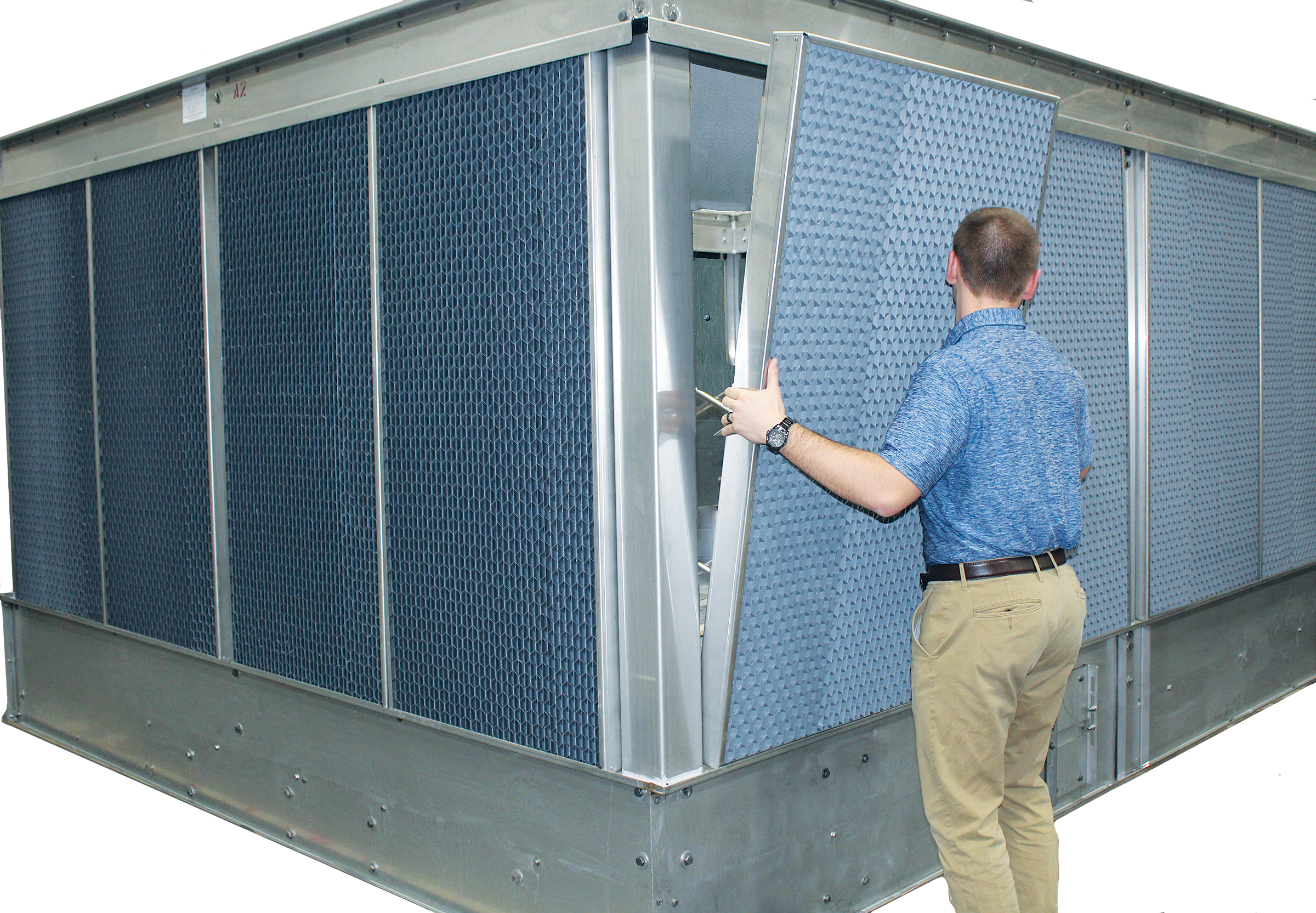
Cooling Towers
Where can I find the Full Load Amps (FLA) of a cooling tower’s electrical components?
A unit’s motor full load amps (or FLA) can be found in the technical data sheet for each specific cooling tower. It is also located in EVAPCO’s custom selection software, Spectrum, in the returned results table. To determine the FLA for other electrical accessories, please contact the HVAC marketing team. If multiple components are utilizing different voltages, the FLA will need to be broken out for each voltage.
How do I clean my air inlet louvers?
Cooling towers can often experience mineral/scale buildup on the exterior surfaces of their air inlet louvers. Improper water treatment, insufficient bleed rates, and/or excessive cycling of the fan motors are the most typical causes. Since the louver material is constructed of lightweight PVC, it cannot withstand the rigors of heavy mechanical cleaning. Therefore, DO NOT USE A WIRE BRUSH OR PRESSURE WASHER TO REMOVE THE MINERALS/SCALE FROM THE AIR INLET LOUVERS. This method of cleaning will damage and/or destroy the louvers.

The best method of removing the minerals/scale from the air inlet louvers is very simple: Remove the louver assemblies and let them soak in the cold water basin of the unit. The water treatment chemicals in the unit will neutralize and dissolve the mineral buildup. The time required for soaking the inlet louvers depends on the severity of the buildup. For more information, please contact your local EVAPCO sales representative.
What are the benefits of a belt drive system when compared to a gear box drive system?
A belt drive system brings many advantages including lower upfront costs, simplified maintenance, lower replacement costs, and shorter lead time.
Regarding maintenance, belt drive systems are much easier to service than gear box drive systems as they require no special tools, equipment, or skills. EVAPCO cooling towers feature extended lube lines—as standard—making it a simple process to grease the bearings. Gear drive maintenance comes with a higher replacement component cost, longer lead time, and advanced equipment requirements (since this process typically involves a crane).
For more information and assistance deciding which system is better for your cooling tower application, please contact your local EVAPCO sales representative.
What is the minimum recommended fan speed for an open cooling tower?
EVAPCO recommends a minimum fan speed of 25% for each available open cooling tower. Operating below 25% of motor speed achieves very little return in fan energy savings and capacity control. This recommend also applies to closed circuit coolers and evaporative condensers. If you have additional questions about the operation of your cooling tower, please contact your local EVAPCO sales representative.
Why would I use equalizer connections instead of a flume box?
Water equalization is required anytime there are two or more separate basins that are combined on the same condenser water loop. There are two main types of equalization: flume box or external equalizer pipe. Only one of these options is required.
The default equalization method for multi-cell units is a flume box.
The decision on whether to use a flume box or equalizer is typically determined by the person designing the system. External equalization requires pipework to be run (by others) between equalizer connections and is typically installed with a valve in the piping to facilitate hydraulic isolation of cells.
In contrast, to isolate cells with a flume box, a flume plate needs to be installed inside the cooling tower, under the water line, each time isolation is required. If you have additional questions about your connections, please contact your local EVAPCO sales representative for assistance.